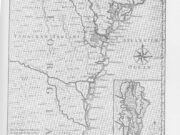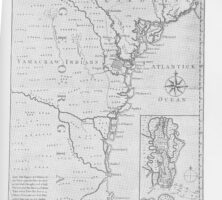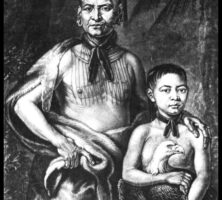The Yamacraw Indians were a small band that existed from the late 1720s to the mid-1740s in the Savannah area. First led by Tomochichi and then by his nephew and heir Toonahowi, they consisted of about 200 people and contained a mix of Lower Creeks and Yamasees. Most eventually reintegrated themselves with the Lower Creeks to avoid future confrontation with European intruders.
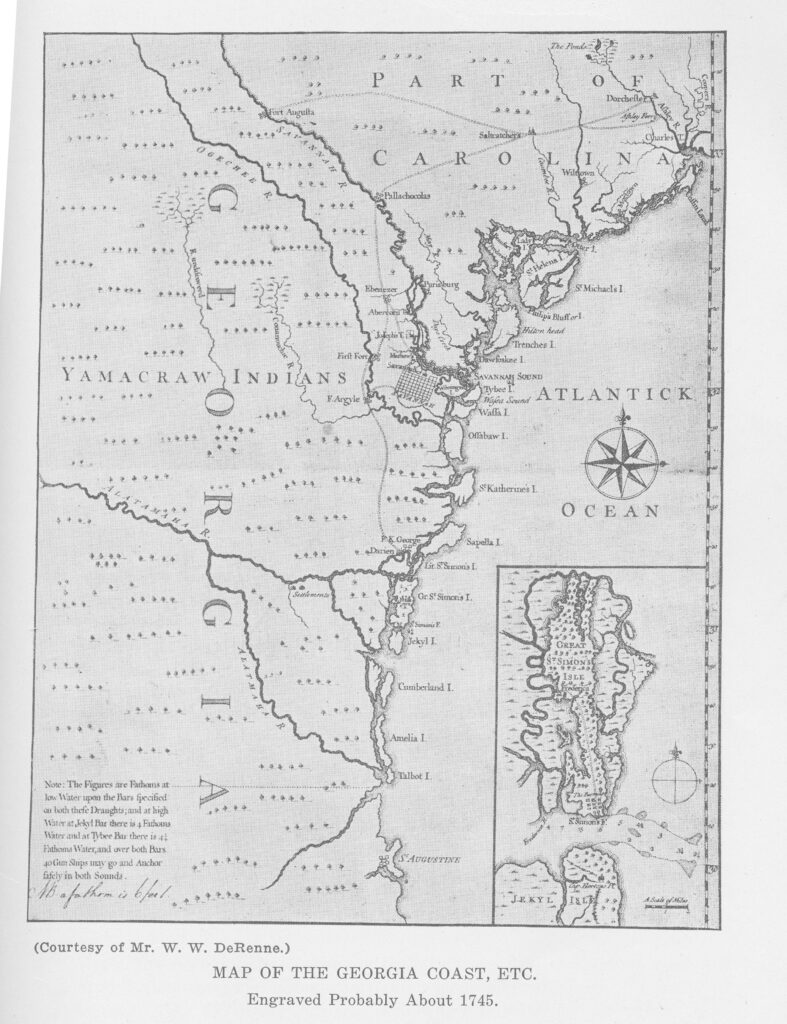
From History of Georgia, by C. Howell
Before the Yamacraws’ formation, the Creeks and the Yamasees dominated the region now known as the state of Georgia. Both nations came under the economic influence of British traders based out of Charleston, South Carolina. As the Indians slid further into debt, the British required immediate payment in the forms of deerskins and/or enslaved Indians. Rather than submit to these demands, the Yamasees attacked British traders and settlers in backcountry South Carolina in 1715, resulting in the Yamasee War, and the Creeks joined their relatives in the fight. When hostilities ended two years later, the Creeks, led by Brims, were quick to reestablish trade with the British, which offended their Yamasee allies, who instead linked with the Spanish out of St. Augustine, in present-day Florida.
Indians who disagreed with these alliances broke away from their brethren in 1728 and formed the Yamacraws under Tomochichi’s leadership. They relocated to the bluffs overlooking the Savannah River, choosing the site for its vacancy, its proximity to British traders, and its spiritual significance as the resting place of Tomochichi’s ancestors. Here they created a new town and prospered quietly until more British settlers, led by James Edward Oglethorpe, arrived in February 1733. Tomochichi negotiated with Oglethorpe and agreed to move his village upstream from the new outpost that would become Savannah. The two men became strong allies and helped to maintain communication among the various ethnic groups in the area at that time. Many Yamacraws returned inland and rejoined their Lower Creek kinsmen as more British colonists settled in Georgia. With Tomochichi’s death in 1739 and Toonahowi’s death in 1743, the Yamacraws ceased to be an influential force.
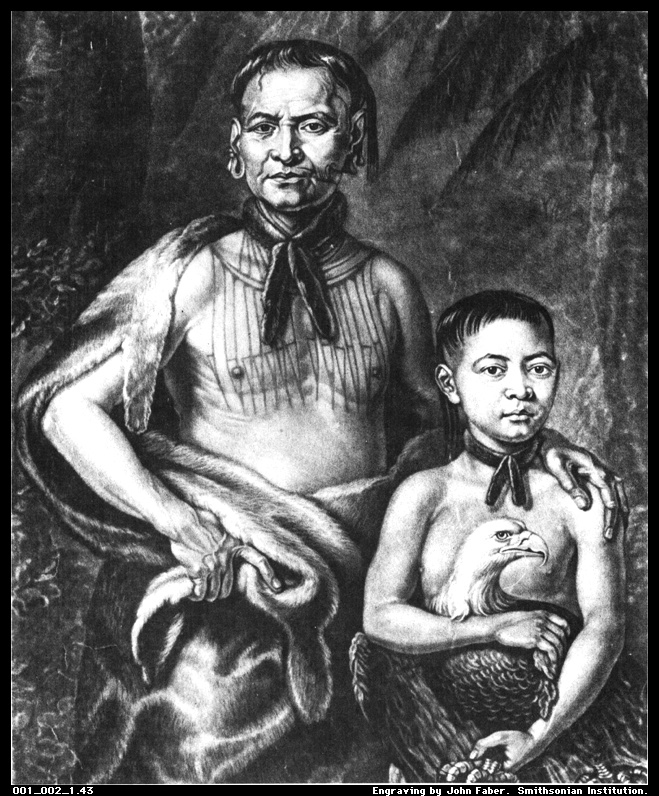
Courtesy of Hargrett Rare Book and Manuscript Library, University of Georgia Libraries.
The Yamacraws followed many of the same traditions shared by all southeastern Indians, including political organization based on towns and familial connections centered around clans. British treaty negotiations with the Lower Creeks in May 1733 suggest that the Creeks accepted the Yamacraws as a branch of their larger polity, which opened the possibilities for additional kinship ties and for the return of repentant individuals. The Yamacraws believed in one god and an afterlife and that spirits inhabited all objects, natural and man-made. Since the group developed in the years after contact with whites, the Yamacraws were already familiar with European traders and had acquired the diplomatic skills necessary to negotiate shrewdly with newcomers and to choose their alliances carefully. They understood the importance of trade and relied upon outposts like the one Mary Musgrove, a Creek-British woman, operated nearby to supply them with certain items in exchange for deerskins and other native goods.
The Yamacraws, as a subsidiary of the Lower Creeks, lasted for less than two decades before merging with that larger nation to avoid encroaching British settlers.


